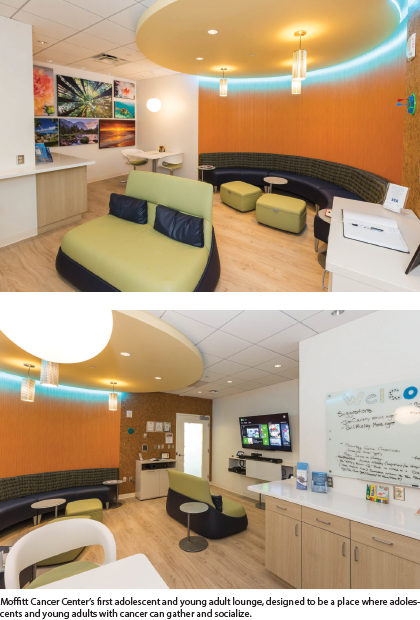According to the National Cancer Institute (NCI), about 70,000 adolescents and young adults—defined by the NCI as those in the 15- to 39-year-old range—are diagnosed with cancer each year in the United States, about six times the number of cases diagnosed in children aged 0 to 14.1 And, although overall cancer survival rates continue to rise—there are nearly 14.5 million cancer survivors alive today2—survival rates for adolescents and young adults have seen little or no improvement in 4 decades. Each year, about 9,000 adolescents and young adults die from their disease, making cancer the leading cause of death in this age group after accidents, suicide, and murder.
Exactly why adolescents and young adults do not fare as well as either younger or older adult cancer survivors is unknown, but likely possibilities include a limited understanding of the biology of cancer in this age group, delayed diagnosis and treatment, treatment noncompliance, unmet psychosocial and supportive care needs, lack of inclusion of adolescents and young adults in clinical studies, and fragmented care by pediatric and adult oncology specialists.
To raise awareness of the unique clinical needs of adolescent and young adult survivors and improve their outcomes, in 2012, Roger Daltrey and Pete Townshend of the rock group The Who launched Teen Cancer America (teencanceramerica.org), an American version of their British charitable organization, Teenage Cancer Trust. The British counterpart was formed in 1989 to provide funding for the development of specialized facilities in cancer centers for teens and young adults between the ages of 13 and 25.
According to Simon Davies, Executive Director of Teen Cancer America, Los Angeles, California, over the past 15 years, the Teenage Cancer Trust has partnered with 35 cancer centers across the United Kingdom to develop standards for age-specific care, improve collaboration between pediatric and adult oncology specialists, and provide services to accommodate the physical and psychosocial needs of adolescents and young adults. He aims to do the same here in the United States.
In just 3 years, Teen Cancer America has partnered with 11 major cancer centers (see sidebar) across the United States to build teen-friendly environments in both the inpatient and outpatient settings. Currently, 40 more cancer institutions have expressed interest in developing similar programs in their centers.
Recently, the charity collaborated with Moffitt Cancer Center in Tampa, Florida, to raise funds to build the center’s first adolescent and young adult lounge, which provides patients with a dedicated area where they can meet other young survivors and interact during treatment. The lounge resembles a brightly decorated, well-equipped den, complete with computers and big screen televisions, tables, and couches (see photos) where adolescents and young adults can gather and socialize.
The ASCO Post talked with Mr. Davies about the goals of Teen Cancer America and how the organization is changing health care for adolescents and young adults with cancer.
Social and Therapeutic Elements
How are the specialized facilities for adolescents and young adults you are developing for cancer centers different from the normal hospital environment?
There are both social and therapeutic elements to the program that are geared to teens in pediatric centers and to older teens and young adults in adult centers. Obviously, young people want to be together, and we want to support them while they are undergoing treatment by bringing them the best facilities and care to ease their burden during their stay. The specialized clinical units we have created have the latest electronic equipment and provide social opportunities for patients to interact with each other and with friends, but they also incorporate multidisciplinary medical teams experienced in providing care for the specific needs of adolescents and young adults.
Our programs also include a research component to encourage inclusion of adolescents and young adults in appropriate clinical trials, so we can gain knowledge about this unique group of patients and their disease.
Multidisciplinary Teams
What medical specialties are included in these multidisciplinary teams?
Ideally, we like to have input from both pediatric and adult medical oncologists, because we are dealing with late-onset pediatric cancers and early-onset adult cancers. However, it can be challenging.
Traditionally, the care of adolescents and young adults has been divided between pediatric and medical oncologists, which can often lead to inconsistencies in treatment approaches. Research has shown that treating adolescents and young adults with a pediatric-directed approach in some cancers can lead to improved outcomes, especially in patients with acute lymphoblastic leukemia and lymphomas. There should be greater collaboration between the two specialties to capitalize on their expertise and develop the most effective treatment plan for each individual patient.
Other members of the team include a lead nurse dedicated to this age group, social workers, integrative and complementary medicine experts (such as acupuncturists), and nutritionists, as well as psychologists and psychiatrists.
Adolescent and young adult patients often feel a loss of control and anxiety, but they don’t want to burden their parents with their fears. Providing them with psychosocial and supportive care can alleviate some of their anxiety.
Camaraderie May Improve Outcomes
How important is it for adolescents and young adults to be grouped together with people their age going through a similar situation rather than being in a treatment room with younger or older patients?
It’s almost as important as having a multidisciplinary care team that is experienced in working with this age group. People this age are “tribal.” They are becoming more independent and are differentiating themselves from both children and older adults to create their own identity. Having people their age around them while going through treatment is incredibly supportive for them. There are experiences they will share with each other that they wouldn’t share with their parents or their medical team. The level of support they provide each other is so extraordinary it can impact their outcome.
In our program in the United Kingdom, we found that issues such as treatment compliance improved in this age group when they were treated together. Teenagers and young adults can engage in risky behavior when they are faced with a disease like cancer, and they may stop taking their medication, drink alcohol, consume recreational drugs, or eat an unhealthy diet.
When young people going through a similar experience get together, there is a sort of camaraderie that develops, and the more experienced patients will often help their newly diagnosed peers cope with cancer, giving them comfort, guidance, and support.
Virtual Support Services
In addition to the physical space provided in these specialized medical units, is there an online component to the program in which adolescents and young adults can communicate with each other?
Yes. Social media is very important to this group, and we encourage virtual support services to be incorporated into the Teen Cancer America programs. For many young people, social media can provide a connection to friends they otherwise wouldn’t have while in isolation undergoing treatment. It is a lifeline, although it is also a constant reminder of what they are missing out on at home, school, or work.
Steps Toward a Specialized Program
What is the process for cancer centers interested in developing a specialized program for the treatment of adolescents and young adults?
When a cancer center contacts us, we suggest a telephone conference call with members of its multidisciplinary care team to learn about their needs and what they want to accomplish. Next, we arrange to visit the center to evaluate its infrastructure and meet with staff to develop a strategy for building a specialized treatment unit and program for adolescents and young adults. In addition to providing initial funding support, we also work with the center to raise funds for the facility and program.
Our goal is to ensure that all adolescent and young adult patients with cancer have the medical and social resources they need throughout their treatment and beyond to optimize their outcome. ■
Disclosure: Mr. Davies reported no potential conflicts of interest.
References
1. National Cancer Institute: Adolescents and Young Adults With Cancer. Available at cancer.gov/types/aya. Accessed September 23, 2015.
2. American Cancer Society: Cancer Treatment & Survivorship Facts & Figures, 2014-2015. Available at cancer.org/research/cancerfactsstatistics/survivor-facts-figures. Accessed September 23, 2015.



